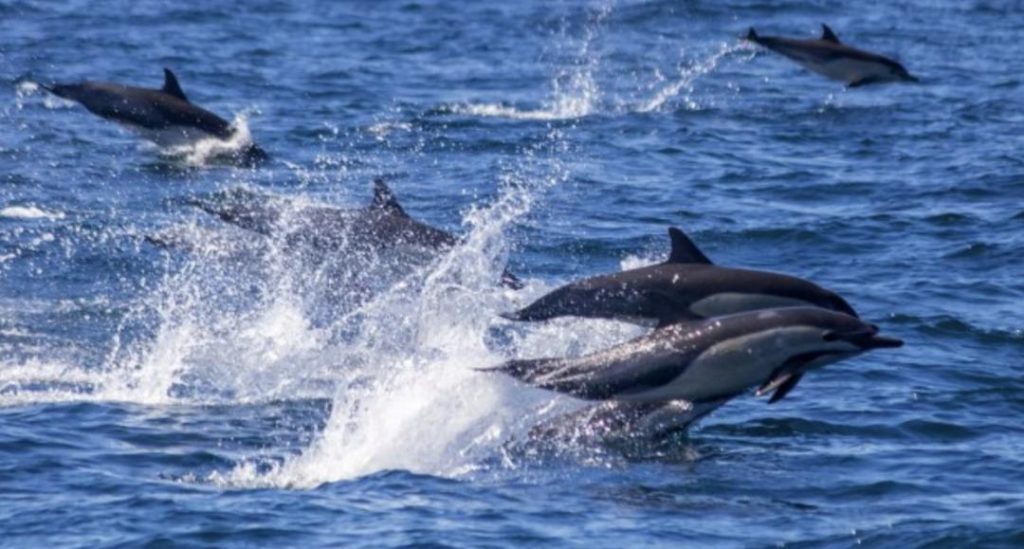
Dolphins & Whales Regularly Socialise with Each Other: Study
In a fascinating discovery, researchers from Griffith University have found that dolphins and whales engage in playful social interactions with each other, frequently swimming together and even playing games. The study, which analyzed videos and photographs of interactions between 19 species of whales and dolphins, revealed that these marine mammals are more social than previously thought.
The research, published in the journal Marine Mammal Science, covered 199 separate events of interactions between baleen whales and dolphins. The findings showed that dolphins and whales regularly socialise and engage in playful behavior, with the most common interaction involving dolphins swimming near the whale’s head.
The study’s lead author, Dr. Stephanie King, a researcher at Griffith University’s Centre for Applications in Natural Resource Mathematics, said, “We were surprised by the frequency and complexity of these interactions. We found that dolphins and whales are not just passive observers of each other, but actively engage with each other and even play games.”
The researchers used videos and photographs taken by marine biologists, whale watchers, and tourists to analyze the interactions. They found that the most common interaction involved dolphins swimming near the whale’s head, often swimming in synchrony with each other. This behavior was observed in 44% of the interactions.
Other common interactions included dolphins swimming alongside whales, playing with whale blowholes, and even interacting with whale calves. The researchers also found that some dolphins would swim under the whale’s body, a behavior known as “underwater surfing.”
The study’s findings suggest that dolphins and whales have a more complex social dynamic than previously thought. While it is well-known that dolphins are highly social animals, the interaction between dolphins and whales has been largely overlooked.
“Bottlenose dolphins were the most involved dolphin species in these interactions,” said Dr. King. “They were observed engaging in playful behavior with multiple whale species, including humpback, minke, and blue whales.”
The researchers believe that these interactions may play an important role in the social development and learning of both dolphins and whales. For example, dolphins may learn important skills, such as hunting and feeding behavior, by observing whales. Similarly, whales may learn social skills, such as communication and cooperation, by interacting with dolphins.
The study’s findings also have implications for our understanding of marine ecosystems. By recognizing the complex social relationships between dolphins and whales, we can better appreciate the importance of preserving their habitats and reducing human impacts on their populations.
In conclusion, the study highlights the fascinating social dynamics between dolphins and whales. These marine mammals are more than just predators and prey; they are social animals that interact and play with each other in complex and fascinating ways.
Source:






